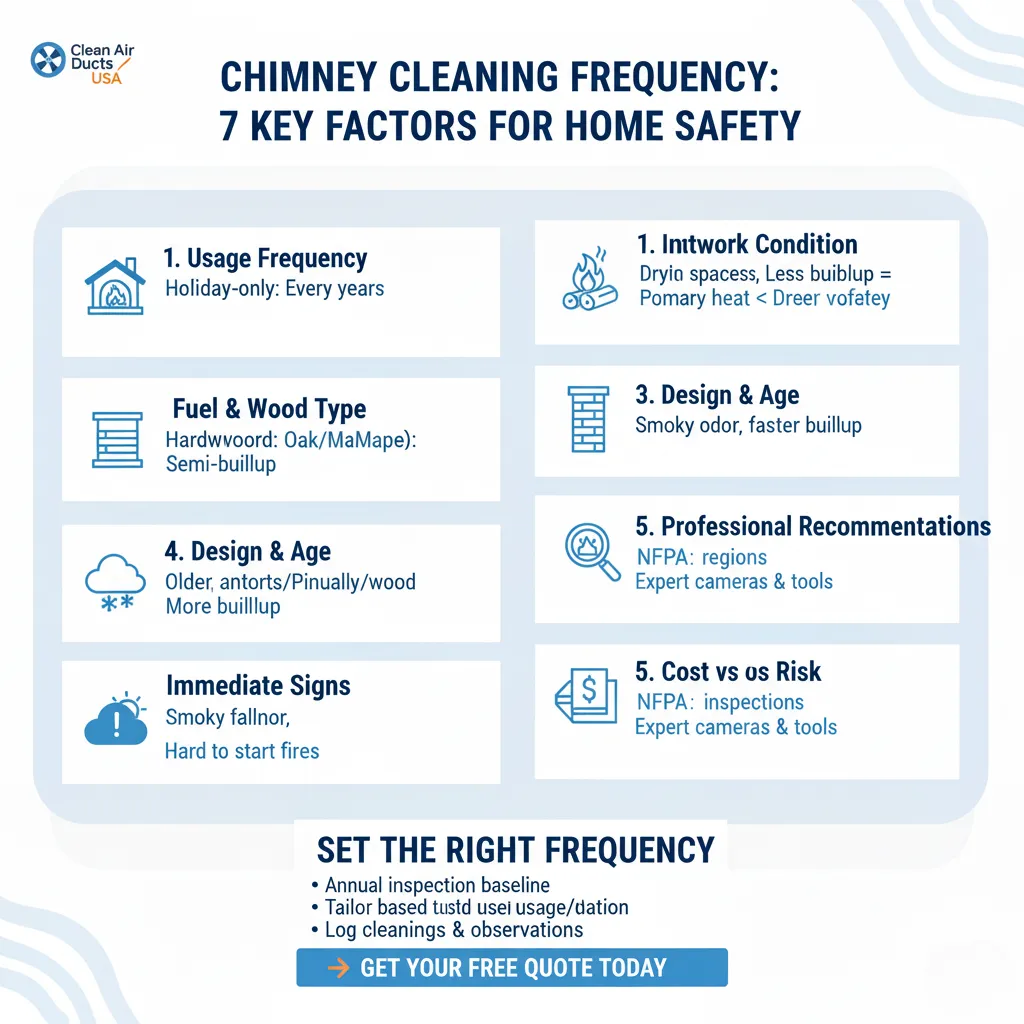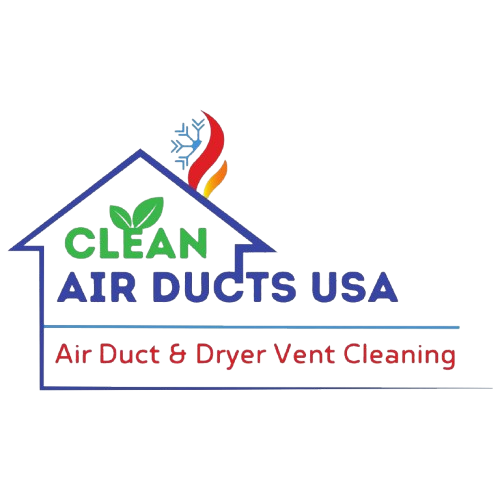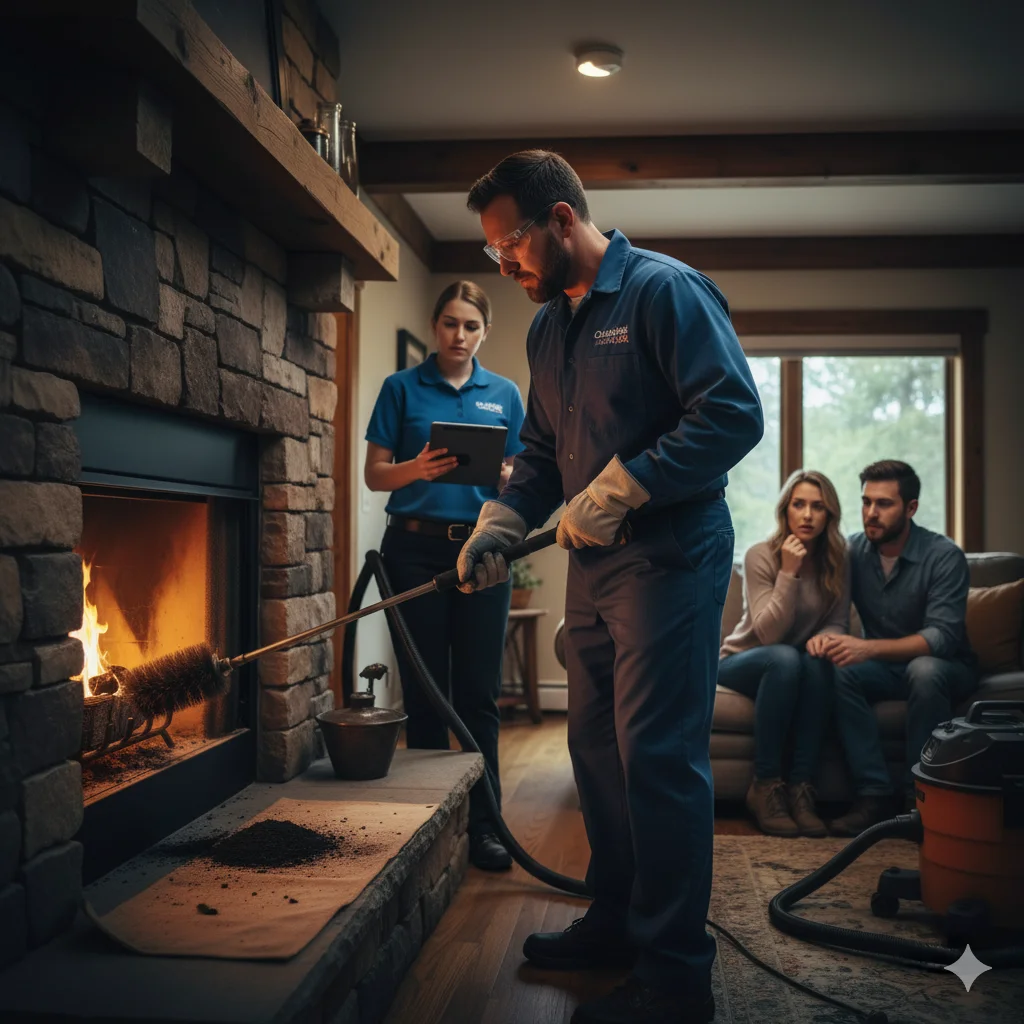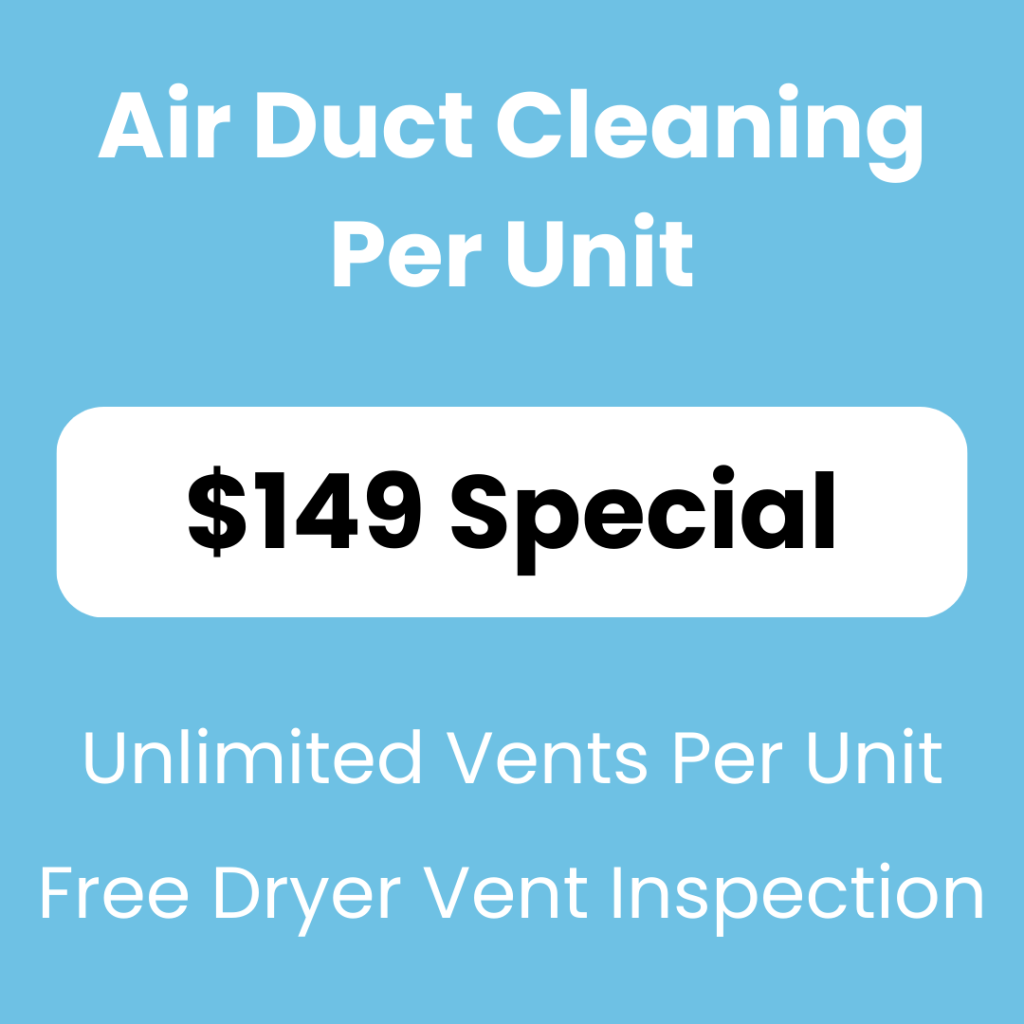Why Chimney Cleaning Frequency Matters
When homeowners think about safety, they often focus on door locks, smoke alarms, or electrical wiring. Yet one of the most overlooked risks is the chimney. Without regular cleaning, chimneys accumulate creosote, soot, and even animal nests—all of which increase the risk of fire. That’s why understanding the right chimney cleaning frequency is essential for keeping your home and family safe.
But how often should you actually clean your chimney? The answer depends on several factors: how often you use your fireplace, the type of wood you burn, the age of your chimney, and even your local climate. This guide will help you determine the optimal chimney cleaning frequency for your home, using real-world examples and practical advice you can apply right away.
Factor 1: How Often You Use Your Fireplace
One of the biggest influences on chimney cleaning frequency is usage. If you light a fire only during the holiday season, your chimney may require cleaning once every two years. On the other hand, if you use your fireplace as a primary heating source throughout the winter, annual or even semi-annual cleanings are recommended.
Think of it like car maintenance: the more miles you drive, the sooner you need an oil change. A family in Vermont, for example, used their wood-burning stove nearly every night from October through March. Their chimney sweep recommended two cleanings per year to keep creosote buildup under control. Compare that to a family in Texas who used their fireplace only a handful of times annually—their chimney cleaning frequency was set at once every two years.
By evaluating your own usage habits, you can better predict when your next cleaning should take place.
Factor 2: Type of Fuel and Wood Burned
Not all fires create the same amount of residue. Hardwood like oak or maple burns hotter and cleaner, producing less creosote. Softer woods such as pine or cedar burn cooler, creating more smoke and sticky deposits. Using treated or damp wood also accelerates buildup.
For example, a homeowner in Oregon who regularly burned seasoned hardwood found that annual cleanings were sufficient. In contrast, their neighbor burned softwoods cut from their property, leading to significant creosote accumulation and requiring two cleanings per year. The difference in chimney cleaning frequency was directly tied to the choice of fuel.
If you want to extend the time between cleanings, consider burning only seasoned hardwood and storing it properly to prevent moisture.
Factor 3: Chimney Design and Age
The structure and age of your chimney play a role in determining cleaning needs. Older chimneys may have cracks, rougher surfaces, or outdated liners that encourage creosote to stick more easily. Modern, well-lined chimneys often stay cleaner for longer.
Consider two homes of the same size: one built in 1950 with an unlined brick chimney, and another built in 2015 with a stainless-steel liner. The older chimney’s rough surfaces collect creosote faster, requiring annual cleanings. The newer chimney, with its smooth lining, may safely extend the chimney cleaning frequency to every 18–24 months.
It’s similar to comparing non-stick cookware with cast iron. While both work, one surface requires more scrubbing to stay clean.
Factor 4: Climate and Environmental Conditions
Your local climate also affects how often you should schedule chimney cleanings. Homes in colder regions tend to use fireplaces more frequently, leading to quicker buildup. Meanwhile, areas with high humidity may see accelerated corrosion inside the chimney.
Take Minnesota, for instance, where long winters mean fireplaces are used heavily. Homeowners there typically need annual inspections and cleanings. In contrast, homeowners in California’s coastal areas may only need to consider chimney cleaning frequency every two years due to lighter usage and milder winters.
Environmental factors such as nearby construction, dust, or heavy pollen can also contribute to deposits inside your chimney. These unique local conditions should always be factored into your cleaning schedule.
Factor 5: Signs That Your Chimney Needs Immediate Attention
Even if you stick to a schedule, some warning signs demand an urgent cleaning regardless of timing. A strong smoky odor, visible soot falling into the fireplace, or difficulty starting fires can all signal excessive creosote buildup.
A homeowner in Chicago noticed dark flakes falling onto their hearth during a summer storm. When they scheduled a cleaning, the chimney sweep found a bird’s nest partially blocking the flue. Ignoring these warning signs could have resulted in dangerous carbon monoxide buildup once winter arrived.
Think of chimney maintenance like paying attention to your car’s “check engine” light. Even if your mileage isn’t up, ignoring obvious signs can lead to costly—and dangerous—consequences.
Factor 6: Professional Recommendations vs. DIY Inspections
The National Fire Protection Association (NFPA) recommends annual inspections regardless of usage. Professional chimney sweeps can use cameras and specialized tools to identify problems you might miss. Their guidance often fine-tunes your chimney cleaning frequency to match your specific situation.
For example, a homeowner in Denver who believed they needed cleanings every two years discovered, through a professional inspection, that annual service was necessary due to a poorly insulated flue. Without expert input, they might have been unknowingly increasing their fire risk.
While it’s helpful to perform a quick flashlight check yourself, relying solely on DIY inspections can be risky. Professionals have the training to spot hidden hazards, giving you peace of mind that your schedule is accurate.
Factor 7: Cost vs. Risk—Why Frequency Pays Off
Some homeowners delay chimney cleaning to save money, but this can backfire. Creosote buildup is the leading cause of chimney fires, which can cost tens of thousands in damages—or worse, endanger lives. The modest cost of regular maintenance pales in comparison to these risks.
Consider this comparison: A chimney sweep may charge $150–$250 for a routine cleaning. But one chimney fire can cause $10,000 in structural damage, not including smoke cleanup or insurance rate hikes. Maintaining the right chimney cleaning frequency is an investment in both safety and financial security.
It’s like dental cleanings—you might save a little by skipping one, but the cost of a root canal later far outweighs the small preventative expense.
How to Set the Right Chimney Cleaning Frequency for Your Home
To determine your schedule, start with an annual inspection. From there, tailor your frequency based on usage, wood type, chimney condition, and climate. Keep a log of cleanings and note any changes in performance, such as increased smoke or unusual odors.
Practical example: A family in Maine set a schedule of one inspection and one cleaning each year. By tracking their fireplace usage and wood supply, they confirmed this rhythm kept their chimney safe and efficient. Over time, they saved money by avoiding emergency cleanings or repairs.
By combining professional advice with personal observation, you’ll create a plan that balances safety, cost, and convenience.
A Safer Home Starts with the Right Frequency
Determining the right chimney cleaning frequency isn’t about following a one-size-fits-all rule. It depends on how often you use your fireplace, the fuel you burn, the age of your chimney, and your local climate. Annual inspections are the baseline, but adjustments ensure your home stays safe and your system runs efficiently.
Regular maintenance is one of the simplest ways to prevent house fires, improve air quality, and extend the life of your chimney. With the right schedule, you can enjoy the warmth of your fireplace with peace of mind.
Schedule Your Chimney Service Today
Don’t leave your family’s safety to chance. Our team provides expert chimney inspections and cleanings tailored to your home’s unique needs. Whether you need an annual cleaning or guidance on setting the right chimney cleaning frequency, we’ll ensure your system is safe, efficient, and ready for use.
Contact us today to schedule your chimney inspection and cleaning. Protect your home, your family, and your peace of mind.




